Right now this is just anything that comes to mind since I'm a complete noob at tumblr. I've been hearing about it for years but I never really felt like I had anything to say. Well all that has changed now and I figured I'd see what all the hype about tumlr is really about. Anyway don't take anything I say too seriously for now...I'll probably change it later when I become more comfortable with this website.
168 posts
Latest Posts by risingstarling - Page 2
Do you have any voice tips to offer???

OH MY GOD SOMEONE IS REALLY ASKING ME THIS SOMEONE IS REALLY ASKING ME THIS GYAAAAAAAAAAAAAH!
Okay, composure Emily…composure!
1.) A common problem that people have when singing is that they think raising their head up when they can’t reach a note will help. Let me tell ya, it really won’t. In fact, it will cause vocal problems down the road and really strain your voice. Tipping your chin down and level to the floor not only works better but sounds better.

2.) Stop using Glottal Attacks. It’s what happens when the edges of your vocal cords strike against each other in over closure. A good way to stop using them is to put soft “h’s” in front of words that begin with vowels. For example: everyone –> hh-everyone, I –> hh-I and always –> hh-always.
3.) VERY IMPORTANT TIP THAT PLAGUED ME FOR MOST OF MY CHILDHOOD: DO NOT I repeat DO NOT BREATHE WITH YOUR SHOULDERS! It used to make me shake while I sang and despite what you think, no it will not give you more air. Instead of breathing like that (vertically) you need to breathe from your chest area (I mean like around your ribs, diaphragm, etc.)

Cup your hands around your ribs til the point where your fingers are touching. Slowly, and without moving your shoulders, breath from your abdomen. Imagine you are like a balloon being inflated. When you exhale your stomach should go IN and when your inhale your stomach should go OUT despite what cartoons depict.
This reply is getting really long so I’ll finish it up with how you START up. Warm ups!
4.) Warm Ups. Doing warm ups before you sing is healthy for your voice and makes it easy to sing higher or lower without strain.
This first one is called Lip Trills but I like to call it the Jean Kirschstein exercise. You know how a horse flubs it’s lips? Like BRRRRR! That’s how this works. We all do it when we’re bored but here is an example of it:

Yes, you look like a catfish, but it helps so it doesn’t matter. While you do this you hum different pitches. I do 1-2-3-4-5-4-3-2-1 which is basically like sliding up to the third and back. This may sound complicated so I’ll record a clip of it on vocaroo.
The next one is 1-5-1-9-1. We can sing this using various vowels but I use Ee-Ah-Ee-Ah-Ee.
LAST TIP! YOU NEED YOUR MOUTH TO LOOK LIKE A FISH…somewhat. When you sing things with vowels like “ee” or “ie” you tend to make your mouth wide like your smiling. DO NOT DO THAT. Instead, do this.

Imagine that painting the Scream? Isn’t that what it’s called? Anyways, the painting of the guy that’s screaming. He holds his hands near his mouth in shock. For the time being until you can break that habit of smiling on those ie and ee words try doing this and see if it helps.
If you have anymore questions feel free to ask! This is pretty much what I’ve learned from 10 years of singing lessons.
Once again, I apologize that this post is really long. Thank you for asking! I love talking about singing in general!
![Christine Daae’s Costumes In Every Song [Requested By @hellyeahsmovies]](https://64.media.tumblr.com/e2a9f132e3a0a81dc629f27d61ce580c/tumblr_pd0x6e3qiV1u2g6jko5_250.gif)
![Christine Daae’s Costumes In Every Song [Requested By @hellyeahsmovies]](https://64.media.tumblr.com/19ddbeda904512c137c7a047261fca00/tumblr_pd0x6e3qiV1u2g6jko6_250.gif)
![Christine Daae’s Costumes In Every Song [Requested By @hellyeahsmovies]](https://64.media.tumblr.com/9eb76cff3c0b474ff51e965dbe31945c/tumblr_pd0x6e3qiV1u2g6jko3_250.gif)
![Christine Daae’s Costumes In Every Song [Requested By @hellyeahsmovies]](https://64.media.tumblr.com/39d3d0b4a9fa743e3e24e537ccf4f0b1/tumblr_pd0x6e3qiV1u2g6jko4_250.gif)
![Christine Daae’s Costumes In Every Song [Requested By @hellyeahsmovies]](https://64.media.tumblr.com/37b14a33194476369483d931292ddb89/tumblr_pd0x6e3qiV1u2g6jko1_250.gif)
![Christine Daae’s Costumes In Every Song [Requested By @hellyeahsmovies]](https://64.media.tumblr.com/d1317979c8abe71e95e723f177f04958/tumblr_pd0x6e3qiV1u2g6jko2_250.gif)
![Christine Daae’s Costumes In Every Song [Requested By @hellyeahsmovies]](https://64.media.tumblr.com/8864c04756b30be04a322bcaeed75f24/tumblr_pd0x6e3qiV1u2g6jko7_r1_250.gif)
![Christine Daae’s Costumes In Every Song [Requested By @hellyeahsmovies]](https://64.media.tumblr.com/f2d0116ca84970b95bc2af15ec4eb829/tumblr_pd0x6e3qiV1u2g6jko8_r1_250.gif)
![Christine Daae’s Costumes In Every Song [Requested By @hellyeahsmovies]](https://64.media.tumblr.com/1356965bad91869651e3d2ff519d32b1/tumblr_pd0x6e3qiV1u2g6jko9_r1_250.gif)
Christine Daae’s Costumes In Every Song [Requested by @hellyeahsmovies]
I'm an aspiring artist, kinda Any specific tips?
I’m also still learning myself but I’ll give you some tips that helped me get to where i am today :D
Use REFERENCES! Don’t ever feel ashamed or embarrassed to, they seriously help. They will help you learn. I use to use reference for poses all the time in till I felt confident enough to start drawing my own poses from my head. using those references helped me learn some things about anatomy that i never noticed before. So use references for something you’re not really confident enough in till you do feel confident.
Get INSPIRATION. Find artists who inspire you (the more the better) if you just love the way they draw faces, or landscapes, or anything. examine their style copy a few of their drawings (its fine as long as you don’t post it or anything) use it as a reference, it will help you learn a few things and develop a style of your own. I have many artists i look up to and sometimes when i feel uninspired or on an art block, i would sometimes visit their blogs and just look at their art and it makes me feel like drawing something (I don’t think this works on everyone though)
POST THINGS! let people see your work. When someone likes it or re-blogs it or leaves a comment, it is like the best feeling ever! it will makes you want to draw even more and post your art. i highly recommend you to download this app called “art amino” it’s amazing for artists who want their work to be noticed. art amino is a very friendly community full of artists who also want to improve, they try to help each other out. Ive made so many good friends on that app and it gave me the confidence to post my art on bigger sites like Tumblr XD
DRAW DRAW DRAW! buy like one of those cute minnie sketchbooks where you can carry around everywhere, and draw in there when you have the chance, maybe have a goal to fill it in by the end of the year or something. dont over work your self though, it could hurt you, if you are ever on an art block, just walk away and do something else for a while, like watch a movie.
PATIENCE AND PRACTISE!!!!!! I know you probably get told that a lot but seriously i think that practise is the most important! I know that anyone can draw, the problem is not everyone wants to, and the people who want to, get discouraged if they don’t see results fast enough. BUT GETTING GOOD AT SOMETHING LIKE REALLY GOOD IS A VERY SLOW PROGRESS! Everyone starts from a level 0, everyone starts from nothing, i started from nothing, every big successful person started from nothing, its just the will to not give up no matter how hard it gets is what not every person has. everyone has the ability but not the will. BE THAT PERSON WHO HAS THE WILL!!! I believe in you!! no but for real, you can do it <3
Here are some links to stuff that really helped me out :D
Elentori’s Insp Blog- super cool i can just scroll through it forever (sadly it doesn’t go on forever :P)
References- these are suuuper helpful!!
tutorials- these are badass B)
character design references - <333
Ross Draws - very helpful for who wants to draw like a badass digitally
Mary doodles- very entertaining and awesome for traditional artists
Markcrilley - Very amazing realistic drawings! and also Manga XD
Fine Art-Tips - for traditional artists (He’s amazing)
DrawingWiffWaffles- she’s super cool! just look at her sketchbook vids! inspirational :P
Draw with Jazza- does many tutorials (for almost everything art related) also does cool art competitions
there are more but i don’t want to make this post too longbut I really hope I helps :)



Books BTS wants us to read
seokjin: jungkook no
jungkook: jungkook yes
namjoon: jungkook no!
jungkook: jungkook maybe
jimin *softly*: jungkook …
jungkook: jungkook no.
How to pronounce Jungkook's name
Just saw an ask on my TL. The correct pronunciation for Jungkook is Jeong-gug. The Jeong정 rhymes with long and the Gug국 rhymes with cook. That’s why when Jimin calls out Jungkook ah it goes something like “Jeong-gug-gah”. The last consonant kinda sticking to the next syllable. Like french. Lol.
**23rd May add-ons. Please read more for updated version. Cheers!
If you venture into Korean you’ll find that even the grammar’s arranged in a way that makes it easier to roll off the tongue. Like using -eun은 / -eul을 when a word ends with a consonant.. and -neun는 / -reul를 when it ends with a vowel.
Juhng-kook is the westernized way of saying it just like how Orangutan is pronounced oh-rang-ngoo-tan when Orang(Person) is pronounced Oh-rahng (rhymes with strung) & Hutan(Forest) is pronounced who-tahn(rhymes with run).
The Jeong-cook pronunciation is sometimes adapted by JK himself every once in a blue moon for International ARMYs so you can hear him switch back and forth depending on whether they’re speaking in English or addressing I-ARMYs versus speaking naturally in Korean and not thinking much about it.
“Hi, my name is Jung-cook” vs
“Ireumeun Jeong-gug”
Please refer to this video:
** Since a lot of you are still confused over the pronunciation, I thought I’d clarify with more educational videos:
Vowels
Now the issue with the ‘ㅓ’ eo character in 한글 hangul is that a lot of people tend to pronounce it as “uh” like “uh.. idk”. I’ve seen a “how to pronounce” video done by a non-native that said exactly that. Please try to find videos from natives. That would help you with accuracy.
Here’s a good video guide:
I urge you to explore more videos to broaden your knowledge. So long as you keep with the natives, you’ll be fine. Different teachers have different things to offer.
Consonants
This is for the Spanish speaker in my ask who talked about the 'J’ and the 'Ch’. Koreans tend to pronounce consonants more abruptly so you’re kinda there but it’s not as thick as a 'J’ nor is it as thin as a 'Ch’. You have ㅊ for the thin 'chs.
Here’s a good video guide:
Have fun studying!
My best of winter 2017
Kuzu no honkai

Personally I was quite thrilled for this one since I was folowing the manga. The wait was worth it
Reasons to see it
Great story
Beatiful visuals and art
The ost is so onpoint like damn
The damn feels
I will give you a 5 cmx second vibe sometimes
GREAT CHARACHTER DEVOLPMENT
The human strugles about love are so real
The really hot nsfw scenes lol
Kobayashi-san Chi no Maid Dragon

Ok I was literally expecting nothing from this anime , moe appart ofc . And It actually turned to be one ot the most batiful slice of life/ comedy I’ve seen in a while
Reasons to see it:
Great charachters
I will make you laugh out loudly ad give you some hapiness
The osts and the gags
Some good lessons about life and stuggles
And the most important reason

Whatch it for this godess. Literally lol
Little Witch Academia
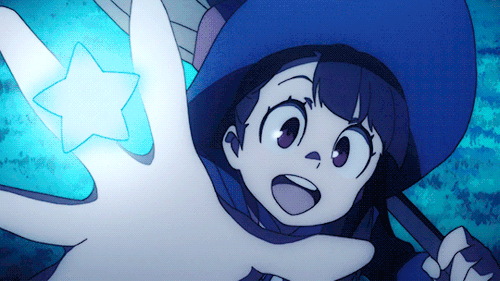
My dark horse of the season. I just love this anime and the vibe it gives so much. Expecially ako and her expressions. Precious child.
Reasons to whatch it:
One of the best female leads
The great sucy ( we all know she is best girl)
The simple but yet great animation
The comedy that alys hides some deep messagge behind it
Whatch it you want to fall in love with magic and innocence
Shouwa Genroku Rakugo Shinjuu: Sukeroku Futatabi-hen

The first season hooked me up. the second one made meworship and love it. Seriously what a magnificent anime
Reason to whatch it:
This is a little masterpiece, You don’t really need more than this lol
Great and unprecditable drama
Memorabe characters
Amazing animation
Best opening I’ve seen in a while. One of my all time favorite op
The feels are real and will et you alive
PLEASE DO YOURSELF A FAVOR AND GO WHATCH THIS
3-gatsu no Lion

This anime once again proved me that underrated anime are the best. This anime strugges are so real that it just breaks your heart. Once again umino chika (Hachimitsu to clover) lived up to her name
Reason to whatch it:
Rei. One of the best devolved protagonist I’ve seen
His problems are so deep and real you can’t help to cheer for him
Great side characters and charachter devolpment
Amazing art
Great balance betwen comedy/seriousness/sad scenes
Come for the charachters and stay for the feels
Gintama
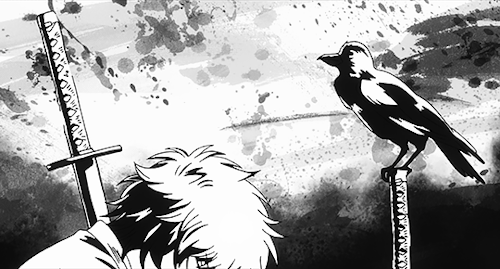
Hands down to one of the most beatiful shonen’s ever made. You don’t need the sad past from the 1 episode to pity the charachters . Afer 400 episodes is more epic
As the precedent arc Gintama was the anime that made me laugh and cry more than everything. The great balance between commedy and serious scenes is what makes gintama so special.
You don’t need reasons to go and whatch this. Just do it , you will thank me later. It’s probably better than any overated shonen anime like one piece ( yeah I said one piece) , Fairy tale, and even Naruto which I love with all my hear.
-My favorite part of the season was about zura’s bacstory and fight scene. I already loved him but the deepness sorachi added to him left me spechless.










– Winners from Crunchyroll’s Anime Awards








Sasuke: KumaQui ( KumaQi熊祁)
Itachi: coser天狼
Btw Sasuke (KumaQui) was like: Itachi is beautiful ~ , and Itachi replied:”Baby brother, people are looking at your chest and your face…” ( 弟弟,他们眼里只要是在看你的胸和脸啊!!)
|太多的羁绊只会让自己迷惘,强烈的想法和珍惜的思念,只会让自己变弱 …. (这二柱子全程一脸看智障的看着鼬好嘛!!)||
“Pick your battles. Pick… pick fewer battles than that. Put some back. That’s too many.”
— Tsuna at Hibari
Resources For Writing Sketchy Topics

Medicine
A Study In Physical Injury
Comas
Medical Facts And Tips For Your Writing Needs
Broken Bones
Burns
Unconsciousness & Head Trauma
Blood Loss
Stab Wounds
Pain & Shock
All About Mechanical Injuries (Injuries Caused By Violence)
Writing Specific Characters
Portraying a kleptomaniac.
Playing a character with cancer.
How to portray a power driven character.
Playing the manipulative character.
Portraying a character with borderline personality disorder.
Playing a character with Orthorexia Nervosa.
Writing a character who lost someone important.
Playing the bullies.
Portraying the drug dealer.
Playing a rebellious character.
How to portray a sociopath.
How to write characters with PTSD.
Playing characters with memory loss.
Playing a pyromaniac.
How to write a mute character.
How to write a character with an OCD.
How to play a stoner.
Playing a character with an eating disorder.
Portraying a character who is anti-social.
Portraying a character who is depressed.
How to portray someone with dyslexia.
How to portray a character with bipolar disorder.
Portraying a character with severe depression.
How to play a serial killer.
Writing insane characters.
Playing a character under the influence of marijuana.
Tips on writing a drug addict.
How to write a character with HPD.
Writing a character with Nymphomania.
Writing a character with schizophrenia.
Writing a character with Dissociative Identity Disorder.
Writing a character with depression.
Writing a character who suffers from night terrors.
Writing a character with paranoid personality disorder.
How to play a victim of rape.
How to play a mentally ill/insane character.
Writing a character who self-harms.
Writing a character who is high on amphetamines.
How to play the stalker.
How to portray a character high on cocaine.
Playing a character with ADHD.
How to play a sexual assault victim.
Writing a compulsive gambler.
Playing a character who is faking a disorder.
Playing a prisoner.
Portraying an emotionally detached character.
How to play a character with social anxiety.
Portraying a character who is high.
Portraying characters who have secrets.
Portraying a recovering alcoholic.
Portraying a sex addict.
How to play someone creepy.
Portraying sexually/emotionally abused characters.
Playing a character under the influence of drugs.
Playing a character who struggles with Bulimia.
Illegal Activity
Examining Mob Mentality
How Street Gangs Work
Domestic Abuse
Torture
Assault
Murder
Terrorism
Internet Fraud
Cyberwarfare
Computer Viruses
Corporate Crime
Political Corruption
Drug Trafficking
Human Trafficking
Sex Trafficking
Illegal Immigration
Contemporary Slavery
Black Market Prices & Profits
AK-47 prices on the black market
Bribes
Computer Hackers and Online Fraud
Contract Killing
Exotic Animals
Fake Diplomas
Fake ID Cards, Passports and Other Identity Documents
Human Smuggling Fees
Human Traffickers Prices
Kidney and Organ Trafficking Prices
Prostitution Prices
Cocaine Prices
Ecstasy Pills Prices
Heroin Prices
Marijuana Prices
Meth Prices
Earnings From Illegal Jobs
Countries In Order Of Largest To Smallest Risk
Forensics
arson
Asphyxia
Blood Analysis
Book Review
Cause & Manner of Death
Chemistry/Physics
Computers/Cell Phones/Electronics
Cool & Odd-Mostly Odd
Corpse Identification
Corpse Location
Crime and Science Radio
crime lab
Crime Scene
Cults and Religions
DNA
Document Examination
Fingerprints/Patterned Evidence
Firearms Analysis
Forensic Anthropology
Forensic Art
Forensic Dentistry
Forensic History
Forensic Psychiatry
General Forensics
Guest Blogger
High Tech Forensics
Interesting Cases
Interesting Places
Interviews
Medical History
Medical Issues
Misc
Multiple Murderers
On This Day
Poisons & Drugs
Police Procedure
Q&A
serial killers
Space Program
Stupid Criminals
Theft
Time of Death
Toxicology
Trauma
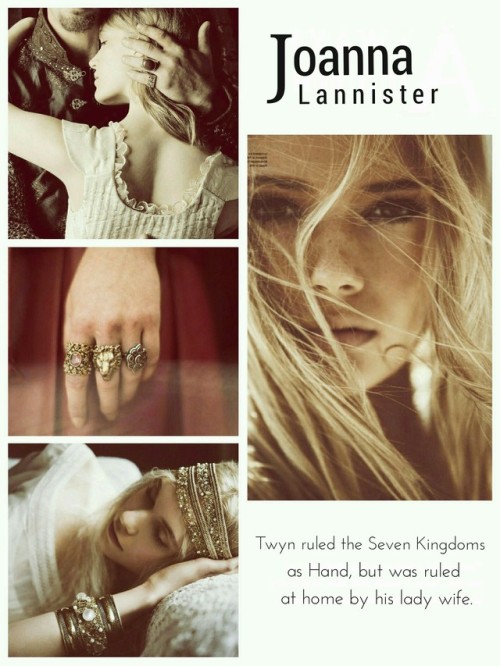


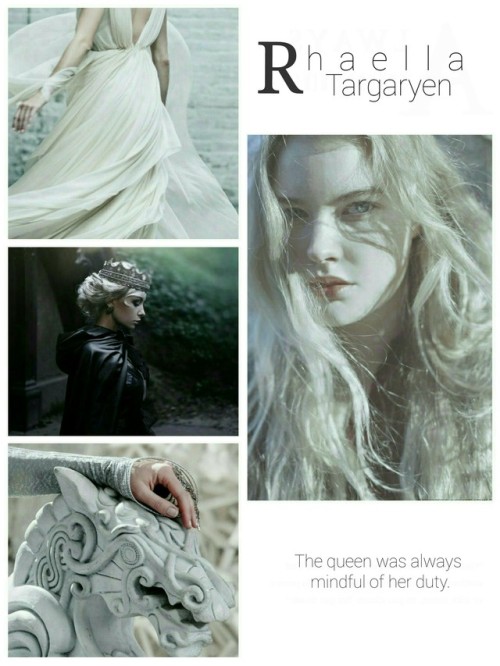

The women of A Song of ice and fire
The women of Robert’s rebellion
They forget to tell the stories of them, when without them would be no history.
Bran: I know everything
Sam: oh ok so you knew rhaegar annulled his marriage
Bran: whaaaAt
Cersei : You only have two dragons now
Daenerys: Nope, still three


and…






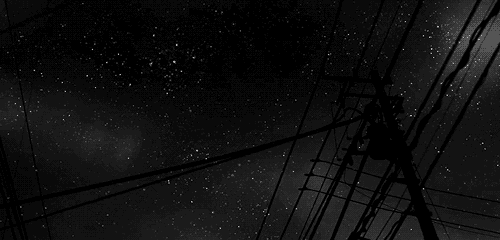








“It might not be a popular thought… but not everyone wants to be alive.”
Happy Birhtday Jason Todd🎂 (August 16)
how can i make my characters empathetic?
Hey there, anon! Empathy is the ability to understand and share the feelings of others. I have two different ways to answer this: how to make your characters be empathetic and how to make people empathetic towards your characters.
HOW TO MAKE CHARACTERS BE EMPATHETIC
This one is pretty self-spoken for. There is really only one way that I know of to make a character to be empathetic and it’s to put them in a situation that the character feels sympathy for another or have them care about something and to, eventually, share the feelings of the other character.
This could be just about anything - get creative with it! For example, have someone be treated unjustly, someone be thrust into grief or danger, facing an inner struggle, etc.
HOW TO MAKE PEOPLE EMPATHETIC TOWARDS CHARACTERS
This is actually pretty easy and you can also just repeat the above tips and tricks if you’d like!
However, different examples - and remember to get creative with it - are having your character display a valuable trait (though this is typically more rewarding if done a little before they make a choice that has a negative impact).
In addition, people love to watch real talent. Have your character be particularly good at something but don’t just tell how good someone is with a knife; show us. Show us how long it took, how many hours of pain and getting injured they had to withstand. Show them caring for their knives as if they were children. Show not tell is a very important part here.
Have them wish for a universal change or show them caring for people. For example, wishing for world hunger to go away and helping starving people go hand in hand together. Wishing for equality and going to rallies for pride, black lives matter, etc, go hand in hand.
Give them something unique about them. Something that will make the reader grow some sort of attachment to them.
I hope this helped, anon, and if you have any additional questions, please come ask! Happy writings! x
- Mod Lilly
If you need advice on general writing or fanfiction, you should maybe ask us!
How do you write a fight scene without becoming repetitive? I feel like it just sounds like "she did this then this then this." Thanks so much!
I watch her as she fights. Her left leg flies through the air – a roundhouse – rolling into a spin. She misses, but I guess she’s supposed to. Her foot lands and launches her into a jump. Up she goes again, just as fast. The other leg pumps, high knee gaining altitude. The jumping leg tucks. Her body rolls midair, momentum carrying her sideways. She kicks. A tornado kick, they call it. The top of her foot slams into Rodrigo’s head, burying in his temple. Didn’t move back far enough, I guess.
His head, it snaps sideways like a ball knocked off a tee. Skull off the spine. His eyes roll back, and he slumps. Whole body limp. Legs just give out beneath him. He clatters to the sidewalk; wrist rolling off the curb.
She lands, making the full turn and spins back around. Her eyes are on his body. One foot on his chest. I don’t know if he’s alive. I don’t know if she cares. Nah, she’s looking over her shoulder. Looking at me.
The truth twists my gut. I should’ve started running a long time ago.
The first key to writing a good fight scene is to tell a story. The second key is having a grasp of combat rules and technique. The third is to describe what happens when someone gets hit. The fourth is to remember physics. Then, roll it all together. And remember: be entertaining.
If you find yourself in the “and then” trap, it’s because you don’t have a firm grasp of what exactly it is your writing. “He punched” then “She blocked” then “a kick” only gets you so far.
You’ve got to get a sense for shape and feeling, and a sense of motion. Take a page from the comic artist’s playbook and make a static image feel like it’s moving. Try to remember that violence is active. Unless your character is working with a very specific sort of soft style, they’re attacks are going to come with force. So, you’ve got to make your sentences feel like your hitting something or someone.
“Ahhh!” Mary yelled, and slammed her fist into the pine’s trunk. A sickening crack followed, then a whimper not long after.
Angie winced. “Feel better?”
Shaking out her hand, Mary bit her lip. Blood dripped from her knuckles, uninjured fingers gripping her wrist. She sniffed, loudly. “I…” she paused, “…no.”
“You break your hand?”
“I think so. Yeah.”
“Good,” Angie said. “Think twice next time before challenging a tree.”
Let your characters own their mistakes. If they hit something stupid in anger, like a wall or a tree then let them have consequences.Injury is part of combat. In the same way, “I should be running now” is. When the small consequences of physical activity invade the page, they bring reality with them.
People don’t just slug back and forth unless they don’t know how to fight, or their only exposure to combat is mostly movies or bloodsport like boxing. Either way, when one character hits another there are consequences. It doesn’t matter if they blocked it or even deflected it, some part of the force is going to be transitioned into them and some rebounds back at the person who attacked.
Your character is going to get hurt, and it’ll be painful. Whether that’s just a couple of bruises, a broken bone, or their life depends on how the fight goes.
However, this is fantasy. It is all happening inside our heads. Our characters are never in danger unless we say they are. They’ll never be hurt unless we allow it. A thousand ghost punches can be thrown and mean absolutely, utterly nothing at all to the state of the character. This is why it is all important to internalize the risks involved.
The writer is in charge of bringing a dose of reality into their fictional world. It is much easier to sell an idea which on some level mimics human behavior and human reactions. The ghost feels physical because we’ve seen it happen on television or relate to it happening to us when we get injured.
You’ve got five senses, use them. You know what it feels like to get injured. To be bruised. To fall down. To be out of breath. Use that.
Here’s something to take with you: when we fight, every technique brings us closer together. Unless it specifically knocks someone back. You need specific distances to be able to use certain techniques. There’s the kicking zone, the punching zone, and the grappling zone. It’s the order of operation, the inevitable fight progression. Eventually, two combatants will transition through all three zones and end up on the ground.
So, keep the zones in mind. If you go, “she punched, and then threw a roundhouse kick” that’s wrong unless you explain more. Why? Because if the character is close enough to throw a punch, then they’re too close to throw most kicks. The roundhouse will just slap a knee or a thigh against the other character’s ribs, and probably get caught. If you go, “she punched, rammed an uppercut into his stomach, and seized him by the back of the head”, then that’s right. You feel the fighters getting progressively closer together, which is how its supposed to work.
Use action verbs, and change them up. Rolled, rotated, spun, punched, kicked, slammed, rammed, jammed, whipped, cracked, etc.
You’ve got to sell it. You need to remember a human’s bodily limits, and place artificial ones. You need to keep track of injuries, every injury comes with a cost. Make sure they aren’t just trading blows forever.
I’ve seen advice that says fights all by themselves aren’t interesting. I challenge that assertion. If you’re good at writing action, then the sequence itself is compelling. You know when you are because it feels real. Your reader will tune out if it isn’t connecting, and the fight scene is a make or break for selling your fantasy. It is difficult to write or create engaging, well choreographed violence that a reader can easily follow and imagine happening.
-Michi
This blog is supported through Patreon. If you enjoy our content, please consider becoming a Patron. Every contribution helps keep us online, and writing. If you already are a Patron, thank you.
How to Write a Novel: Tips For Visual Thinkers.
1. Plotting is your friend.
This is basically a must for all writers (or at least, it makes our job significantly easier/less time consuming/less likely to make us want to rip our hair out by the roots), but visual thinkers tend to be great at plotting. There’s something about a visible outline that can be inexplicably pleasing to us, and there are so many great ways to go about it. Here are a few examples:
The Three-Act Structure
This one is one of the simplest: it’s divided into the tried-and-true three acts, or parts, a la William Shakespeare, and includes a basic synopsis of what happens in each. It’s simple, it’s familiar, it’s easy to add to, and it get’s the job done.
It starts with Act I – i.e. the set-up, or establishing the status quo – which is usually best if it’s the shortest act, as it tends to bore audiences quickly. This leads to Act II, typically the longest, which introduces the disruptor and shows how characters deal with it, and is sandwiched by Act III (the resolution.)
The Chapter-by-Chapter
This is the one I use the most. It allows you to elucidate on the goings on of your novel in greater detail than the quintessential three act synopsis generally could, fully mapping out your manuscript one chapter at a time. The descriptions can be as simple or as elaborate as you need them to be, and can be added to or edited throughout the progression of your novel.
Can easily be added to/combined with the three-act structure.
The Character Arc(s)
This isn’t one that I’ve used a lot, but it can be a lot of fun, particularly for voice-driven/literary works: instead on focusing on the events of the plot, this one centralizes predominantly around the arc of your main character/characters. As with its plot-driven predecessors, it can be in point-by-point/chapter-by-chapter format, and is a great way to map out character development.
The Tent Moments
By “tent moments,” I mean the moments that hold up the foundation (i.e. the plot) of the novel, in the way that poles and wires hold up a tent. This one builds off of the most prevalent moments of the novel – the one’s you’re righting the story around – and is great for writers that want to cut straight to the action. Write them out in bullet points, and plan the rest of the novel around them.
The Mind Map
This one’s a lot of fun, and as an artist, I should probably start to use it more. It allows you to plot out your novel the way you would a family tree, using doodles, illustrations, and symbols to your heart’s content. Here’s a link to how to create basic mind maps on YouTube.
2. “Show don’t tell” is probably your strong suit.
If you’re a visual thinker, your scenes are probably at least partially originally construed as movie scenes in your head. This can be a good thing, so long as you can harness a little of that mental cinematography and make your readers visualize the scenes the way you do.
A lot of published authors have a real big problem with giving laundry lists of character traits rather than allowing me to just see for myself. Maybe I’m spoiled by the admittedly copious amounts of fanfiction I indulge in, where the writer blissfully assumes that I know the characters already and let’s the personalities and visuals do the talking. Either way, the pervasive “telling” approach does get tedious.
Here’s a hypothetical example. Let’s say you wanted to describe a big, tough, scary guy, who your main character is afraid of. The “tell” approach might go something like this:
Tommy was walking along when he was approached by a big, tough, scary guy who looked sort of angry.
“Hey, kid,” said the guy. “Where are you going?”
“I’m going to a friend’s house,” Tommy replied.
I know, right? This is Boring with a capital ‘B.’
On the other hand, let’s check out the “show” approach:
The man lumbered towards Tommy, shaved head pink and glistening in the late afternoon sun. His beady eyes glinted predatorily beneath the thick, angry bushes of his brows.
“Hey, kid,” the man grunted, beefy arms folded over his pot belly. “Where are you going?”
“I’m going to a friend’s house,” Tommy replied, hoping the man didn’t know that he was ditching school.
See how much better that is? We don’t need to be told the man is big, tough, and scary looking because the narrative shows us, and draws the reader a lot more in the process.
This goes for scene building, too. For example:
Exhibit A:
Tyrone stepped out onto his balcony. It was a beautiful night.
Lame.
Exhibit B:
Tyrone stepped out onto his balcony, looking up at the inky abyss of the night sky, dotted with countless stars and illuminated by the buttery white glow of the full moon.
Much better.
3. But conversely, know when to tell.
A book without any atmosphere or vivid, transformative descriptors tends to be, by and large, a dry and boring hunk of paper. That said, know when you’re showing the reader a little too much.
Too many descriptors will make your book overflow with purple prose, and likely become a pretentious read that no one wants to bother with.
So when do you “tell” instead of “show?” Well, for starters, when you’re transitioning from one scene to the next.
For example:
As the second hand of the clock sluggishly ticked along, the sky ever-so-slowly transitioning from cerulean, to lilac, to peachy sunset. Finally, it became inky black, the moon rising above the horizon and stars appearing by the time Lakisha got home.
These kind of transitions should be generally pretty immemorable, so if yours look like this you may want to revise.
Day turned into evening by the time Lakisha got home.
See? It’s that simple.
Another example is redundant descriptions: if you show the fudge out of a character when he/she/they are first introduced and create an impression that sticks with the reader, you probably don’t have to do it again.
You can emphasize features that stand out about the character (i.e. Milo’s huge, owline eyes illuminated eerily in the dark) but the reader probably doesn’t need a laundry list of the character’s physical attributes every other sentence. Just call the character by name, and for God’s sake, stay away from epithets: the blond man. The taller woman. The angel. Just, no. If the reader is aware of the character’s name, just say it, or rework the sentence.
All that said, it is important to instill a good mental image of your characters right off the bat.
Which brings us to my next point…
4. Master the art of character descriptions.
Visual thinkers tend to have a difficult time with character descriptions, because most of the time, they tend to envision their characters as played their favorite actors, or as looking like characters from their favorite movies or TV shows.
That’s why you’ll occasionally see characters popping up who are described as looking like, say, Chris Evans.
It’s a personal pet peeve of mine, because A) what if the reader has never seen Chris Evans? Granted, they’d probably have to be living on Mars, but you get the picture: you don’t want your readers to have to Google the celebrity you’re thirsting after in order for them to envision your character. B) It’s just plain lazy, and C) virtually everyone will know that the reason you made this character look like Chris Evans is because you want to bang Chris Evans.
Not that that’s bad or anything, but is that really what you want to be remembered for?
Now, I’m not saying don’t envision your characters as famous attractive people – hell, that’s one of the paramount joys of being a writer. But so’s describing people! Describing characters is a lot of fun, draws in the reader, and really brings your character to life.
So what’s the solution? If you want your character to look like Chris Evans, describe Chris Evans.
Here’s an example of what I’m talking about:
Exhibit A:
The guy got out of the car to make sure Carlos was alright, and holy cow, he looked just like Dean Winchester!
No bueno. Besides the fact that I’m channeling the writing style of 50 Shades of Grey a little here, everyone who reads this is going to process that you’re basically writing Supernatural fanfiction. That, or they’ll have to Google who Dean Winchester is, which, again, is no good.
Exhibit B:
The guy got out of the car to make sure Carlos was alright, his short, caramel blond hair stirring in the chilly wind and a smattering of freckles across the bridge of his nose. His eyes were wide with concern, and as he approached, Carlos could see that they were gold-tinged, peridot green in the late afternoon sun.
Also note that I’m keeping the description a little vague here; I’m doing this for two reasons, the first of which being that, in general, you’re not going to want to describe your characters down to the last detail. Trust me. It’s boring, and your readers are much more likely to become enamored with a well-written personality than they are a vacant sex doll. Next, by keeping the description a little vague, I effectively manage to channel a Dean Winchester-esque character without literally writing about Dean Winchester.
Let’s try another example:
Exhibit A:
Charlotte’s boyfriend looked just like Idris Elba.
Exhibit B:
Charlotte’s boyfriend was a stunning man, eyes pensive pools of dark brown amber and a smile so perfect that it could make you think he was deliciously prejudiced in your favor. His skin was dark copper, textured black hair gray at the temples, and he filled out a suit like no other.
Okay, that one may have been because I just really wanted to describe Idris Elba, but you get the point: it’s more engaging for the reader to be able to imagine your character instead of mentally inserting some sexy fictional character or actor, however beloved they may be.
So don’t skimp on the descriptions!
5. Don’t be afraid to find inspiration in other media!
A lot of older people recommend ditching TV completely in order to improve creativity and become a better writer. Personally, if you’ll pardon my French, I think this is bombastic horseshit.
TV and cinema are artistic mediums the same way anything else is. Moreover, the sheer amount of fanart and fanfiction – some of which is legitimately better than most published content – is proof to me that you can derive inspiration from these mediums as much as anything else.
The trick is to watch media that inspires you. I’m not going to say “good media” because that, in and of itself, is subjective. I, for example, think Supernatural is a fucking masterpiece of intertextual postmodernism and amazing characterization, whereas someone else might think it’s a hot mess of campy special effects and rambling plotlines. Conversely, one of my best friends loves Twilight, both the movies and the books, which, I’m going to confess, I don’t get at all. But it doesn’t matter that it isn’t good to me so long as it’s good to her.
So watch what inspires you. Consume any whatever movies, books, and shows you’re enthusiastic about, figure out what you love most about them, and apply that to your writing. Chances are, readers will find your enthusiasm infectious.
As a disclaimer, this is not to say you get a free pass from reading: I’ve never met a good writer who didn’t read voraciously. If you’re concerned that you can’t fall in love with books the way you used to (which, sadly, is a common phenomenon) fear not: I grappled with that problem after I started college, and I’ll be posting an article shortly on how to fall back in love reading.
So in the meanwhile, be sure to follow my blog, and stay tuned for future content!
(This one goes out to my friend, beta reader, and fellow writer @megpieeee, who is a tremendous visual thinker and whose books will make amazing movies someday.)

Here’s a little bit on subplots!
How to Write Successful Dialogue
@albino-troll-ninja asked:
Got any feedback/advice/links for someone who wants to make lengthy, relatively action-less dialogues between characters more than just “‘Loren ipsum,’ he said.” “'Ipsum lorem’, she replied.” for forty paragraphs?
No problem! I love dialogue, so I’m happy to be of assistance in this department.
Here are my personal rules of thumb:
1. Allow the dialogue to show the character’s personality.
If you really think about your conversations, it can be telling exactly how much of someone’s personality can shine through when they speak.
Allow your character’s persona, values, and disposition to spill over when they speak, and it will make for a significantly more interesting read for you and your reader.
For example: let’s take a look at a mundane exchange, and see how it can be spruced up by injecting it with a good dose of personality.
Exhibit A)
“How was your day, by the way?” asked Oscar, pouring himself a drink.
“Not too bad,” replied Byron. “Cloudy, but warm. Not too many people.”
“That’s nice.”
Exhibit B)
“How was your day, by the way?” asked Oscar, pouring himself a drink.
“Ugh. Not too bad,” groaned Byron, draping himself on the couch. “Warm, but dreary. Gray clouds as far as the eye could see. Not anyone worth mentioning out this time of year.” A pause. “Well, except me, of course.”
“Hmmph,” said Oscar, glancing over his shoulder. “If it were me, I wouldn’t want it any other way.”
Isn’t that better? Already, the audience will feel as though they’ve gotten to know these characters.
This works for longer dialogue, too: allow the character’s personal beliefs, life philosophy, and generally disposition to dictate how they talk, and your readers will thank you.
Of course, this example is also good for giving the reader a general sense of what the characters’ relationship is like. Which brings me to my next point:
2. Allow the dialogue to show the character’s relationship.
Everyone is a slightly different person depending on who they’re around. Dynamic is an important thing to master, and when you nail it between two characters, sparks can fly.
Work out which character assumes more of the Straight Man role, and which is quicker to go for lowbrow humor. Think of who’s the more analytical of the two and who’s the more impulse driven. Who would be the “bad cop” if the situation called for it.
Then, allow for this to show in your dialogue, and it will immediately become infinitely more entertaining.
Example:
“Alright,” said Fogg, examining the map before him. “Thus far, we’ve worked out how we’re going to get in through the ventilation system, and meet up in the office above the volt. Then, we’re cleared to start drilling.”
Passepartout grinned. “That’s what she said.”
“Oh, for the love of God – REALLY, Jean. Really!? We are PLANNING a goddamn bank robbery!”
Some more questions about dynamic to ask yourself before writing dialogue:
Who is more likely to talk and who is more likely to listen?
Who would talk with their mouth full of food and who would politely wait to swallow?
Is their relationship fraternal/sororal? If so, who would be the “little sibling?”
Is one of them a bit of a mother/father figure to the other?
Who more frequently gets irritated with who?
Who has the more understated sense of humor? Who’s a bit more juvenile?
Who’s better educated? Does it show when they speak?
Who’s a bit more pretentious/full of themselves?
Who interrupts more?
Who swears more?
This can also be a valuable tool to cluing your reader in on who the characters are as people:
3. Think about what this dialogue can tell the reader.
It’s better to fill the reader in more gradually than to waist your valuable first chapter on needless exposition, and dialogue is a great way to do it.
Think about what your characters are saying, and think about ways in which you can “sneak in” details about their past, their families, and where they came from into the discussion.
For example, you could say:
Tuckerfield was a happy-go-lucky Southern guy with domineering parents,
and bore everyone to death.
Or you could have him say:
“Sheesh. All this sneakin’ around in the woods late at night reminds me of being back in Kansas. Good times, man, good times.” There was a pause, before he added, “‘Course, it wasn’t nearly so fun when I came home late for curfew and had to sleep on the front step, but y’know. Life happens.”
Isn’t that much better than the omnipresent monotone?
Dialogue is also a great way to fill in potential plot holes early on, by having your characters talk them out and explain them.
Moreover, dialogue can also be used to foreshadow, offer relevant hints about the climax, or provide information necessary for the resolution.
So use it wisely!
4. Sprinkle in mini-actions throughout.
Even in actionless dialogue, no one actually does nothing. In my case, for example, I stim a lot. I play with my hair. I play with eating utensils. It’s probably very annoying for those around me, but you get the point.
Less fidget-y folks might not do this as much, but they rarely sit totally still during conversations, either. So occasionally add in these mini-actions, and it will make your characters feel a bit less like disembodied voices or floating heads.
For instance:
Jo leaned back in her chair rolling her stiff neck from sitting still for so long. “…So the way I see it,” she continued. “Even if Pheris Beuller’s Day Off didn’t take place in Cameron’s imagination, Pheris was clearly a sociopath whose behavior shouldn’t be glamorized.”
“Ha. As if.” Avery paused to sip her root beer. “Pheris,” she began, raising an index finger. “Was clearly emblematic of counterculturist movements such as the Beat Generation, and his disregard for the capitalistic dogmas imposed upon younger generations is something to be admired.”
“For Christ’s sake, will you two lighten up?” scoffed Leo, counting out bills for the pizza. “We were talking about which movie we wanted to watch tonight. Jesus.”
5. Remember how people actually speak.
In real life conversations, people don’t speak in paragraphs. Alright, some people might, and this can actually be interesting as the personality aspect of a certain type of character.
But generally speaking, people don’t speak in paragraphs, or as though they’re writing thought-out prose or letters.
In real conversations, people stutter. They laugh at their own jokes, repeat words or phrases, and lose their train of thought.
Naturally, you don’t have to illustrate in your writing exactly how chaotic and mundane human speech can be, as writing would be pretty boring in general if it was strictly limited to miming reality. But it’s good to keep in mind that your characters are talking, not writing in purple prose.
Exhibit A:
“When I was a young boy, my mother and I had a most tumultuous relationship,” said Marcus. “She saw me as a hallmark of her past failures, and took every opportunity to remind me as such.”
Exhibit B:
“My mom, when I was kid, we had what you’d call a sort of tumultuous relationship,” said Marcus. “Nothing I ever did was right for her. She, uh – I think she saw me as sort of a hallmark of her past failures. Took every opportunity to remind me of that.”
Which of these is more organic, more easy to visualize, and more telling of character? Unless the point of this dialogue is to illustrate that Marcus is a gentleman crook of some kind with pristine speaking mannerisms, I’m going to say the latter.
Best of luck, I hope this helps, and happy writing! <3
High Payoff Scenes.
If that scene you meant to be emotional, jaw-dropping and climactic isn’t working right, try taking a step back.
All the usual aspects of a good scene also apply to the buildup toward a good scene. As well as including all these aspects into the scene itself, remember that at the point where your awe inspiring scene hits…
The reader should already feel deep, ‘positive’ emotions for the characters involved, whether that be love, intrigue, or an I love to hate them feeling.
The reader should already understand and have witnessed the characters struggling in some way with the goals they are working towards during that scene.
The reader should already have a clear picture of the character’s relationships and emotions, and understand which direction they are moving.
The reader should already be well-based in the plot and have a good understanding of every piece of information they need order to be fully immersed in the scene.
The reader should already have a clear picture of the current stakes and playing field, so they can decide what outcome to root for. (Or in some cases, they can feel the same desperation the pov character has as they realize there are no good outcomes.)
Most importantly, remember that there are no perfect first drafts, and barely any half-decent second, third, or fourth drafts either. If you need to rewrite and rewrite a few times over, that’s okay.
Just because the amazing scene in your head seems to fall short once it’s written, doesn’t mean all its amazingness isn’t still buried in there somewhere.
Scene Transitions
An important part of structuring your story in any format is the transition between scenes. When not handled properly, time and/or location jumps in a narrative can become disorientating and confusing, making it harder for the audience to keep up with the action. There are three important things to focus on when transitioning between scenes: where the first scene ends, where the second scene begins, and how to connect the two.
It’s important that each scene have closure. When you leave a scene, you need to know that the goal of that scene was reached. If you leave the scene too early, before you receive that closure, your audience will be left hanging, feeling unsatisfied and off balance. You need to ‘cut away’ when the scene comes to its natural end, when everything is understood and the audience is ready to move onto the next idea. If you leave the scene too late, it drags your story, and makes it feel like the scene is longer than it is.
As with the end of a scene, the beginning of a new scene must feel natural. If you have to backtrack immediately after starting your scene in order to explain whats going on, then it means you’re not starting at the beginning of the scene. You can sometimes get away with doing this, if the reflection is placed naturally in the writing, but you shouldn’t try and push your luck. If all of your scenes start with an immediate backpedal to explain where everyone is, how they got there, and when it takes place, then you need to go back and fix some things.
Information about the change in time and location are important to include. If you didn’t, then it would be impossible for the audience to tell if, when or how these changes occurred. The most widely accepted way of transitioning between scenes is to detail the things done by the characters to go from scene A to scene B. They can do so by showing the transition between locations (“They walked the distance to the theatre, laughing the whole way”), points in time (“hours passed as she sat reading in her favorite chair”), or combinations of the two (“they drove for days, the grassy hillsides of home growing into a looming mountain range”). The information in the transition must do everything to set up the new scene that’s starting.
I am going to use a segment from “These Shallow Graves” by Jennifer Donnelly as an example of what not to do when transitioning between scenes. In chapter thirty-four, a scene is ending where the protagonist and her love interest meet secretly during a ball and make a plan for her to sneak out later that evening. The scene ends on an angsty moment as they both watch her almost arranged fiance dancing with the competitor for his affections. Chapter thirty-five immediately begins with the two of them having met up and halfway to their destination. It is then explained how the protagonist had left the party early, snuck out, and made it to the meeting point.
Feels kinda jenky huh? Here’s how we could smooth this out.
Their plan for meeting up that evening involves the protagonist telling her uncle (who an attendee) that she is feeling faint and using that as an excuse to leave the ball early. This would make more sense as a place to end the scene as it signals the beginning of the transition between locations. When she sneaks out the house is a good place to officially begin the next scene, as it signals another change in locations. Because the time spent at the protagonist’s home is not important to the overall story (her waiting for everyone to fall asleep) this could serve as the transition between the scene of the first and the scene of the second meetings. The cab ride from her house to the meeting place is also its own small transition, and is a good place to reflect on past information without interfering with anything else going on (such as dialogue and bonding between love interests).
Remember! All of the important things to keep in mind when writing scene transitions are: Know where to end a scene. Know where to begin a scene. Know how to connect the scenes.

Just try not to use them all in the same paragraph. ;P
All About Writing Fight Scenes

@galaxies-are-my-ink asked,
“Do you have any advice on writing fight scenes? The type of scene I’m writing is mostly hand to hand combat between two experts. I’m definitely not an expert so when I try to write it, the scene ends up sounding repetitive and dull.”
Fore note: This post is coauthored by myself and one of my amazing critique partners, Barik S. Smith, who both writes fantastic fight scenes and teaches mixed martial arts, various artistic martial arts, and weapons classes.
I (Bryn) will tell you a secret: I trained MMA for seven years, and when I write authentic hand to hand fight scenes, they sound dull too.
The problem with fight scenes in books is that trying to describe each punch and kick and movement (especially if it’s the only thing you’re describing) creates a fight that feels like it’s in slow motion.
I write…
Lowering her center of gravity, she held her right hand tight to her face and threw a jab towards his chin. He shifted his weight, ducking under her punch. His hair brushed against her fist, and he stepped forward, launching a shovel hook into her exposed side.
But your brain can only read so fast. In real life that series of events would take an instant, but I needed a full eight seconds to read and comprehend it, which gave it an inherent lethargic feel.
So, we have two primary problems:
How do we describe this fight in a way the reader can understand and keep track of?
How do we maintain a fast paced, interesting fight once we’ve broken down the fight far enough for readers to understand it?
(We will get back to these, I promise.) But for now, let’s look at…
Different types of “fight scenes:”
Keep reading
Hello! How would you write a dialogue in which a character is freaking out about something? I generally have them word vomit but I don't really like that style. If its too much could you show me an example as well?
Hi!
You could definitely word vomit – especially if your character is hysterical – but that’s not the only way to do it by any means. I know a few other ways.
1. Calmly.This is strange, considering your character is freaking out, but the freak-out is internal – they’re shutting themselves off due to shock. In this case, they would be quiet, sane, and even if what they’re saying is illogical, it would probably sound reasonable.
“I was right there when she shot him. He dropped like a sack of flour. I figured he was gone as soon as the bullet hit his chest. So now I’ve decided I’m gonna go after her. Right now. And I’m gonna kill her.”“What? You can’t do that!”“Sure I can. She killed him, so I kill her. It’s called justice.”“But- With just your bare hands?”“The way I feel right now, my bare hands are more than enough.”
Notice how the character who just watched their friend die in front of them isn’t yelling, isn’t stuttering, isn’t getting angry or crying – they’re perfectly calm, almost to the point of complete emotional shutdown.
2. Angrily.Some people get angry when they lose control and freak out – it scares them, and the fear manifests itself as anger. This type particularly happens when they’re upset about something and other characters aren’t taking it seriously or are shrugging off their concerns.
“No! It’s happening tonight! We don’t have time to think, or weigh things, we need to fucking leave! Now!”“We can’t. You know that, and you’d remember that, if you were thinking straight-”“I am thinking straight! It’s you who’s fucked in the head. I don’t give a damn what you think we can and can’t do, we need to clear out of here, right this second.”
As you can see, this character is freaking out – their concerns may or may not have a firm foundation, but obviously they are concerned, and that concern is manifesting itself as fury.
3. By stuttering.For some people, it’s hard to talk when they panic, because their minds race forward ahead of their mouths and they get tongue-tied. I typically see/use this with more anxious characters, or with characters who aren’t typically good at speaking anyways (in other words, who are uncomfortable talking).
There are a couple of different ways to stutter:a. Repeat the beginning of each word.
“I tr-tried to s-save him, but he wuh-wouldn’t l-let me … he knew it was g-going to happen. It’s my f-fault!”
(However, keep in mind that this kind of stuttering is more as if your character is crying and trying to talk through sobs and hiccups. Please use it sparingly – it can get old fast.)
b. Repeat words.
“No. No, I don’t know what’s going on, Ricky. Ricky, why would I have any idea? Don’t fucking look at me like that, Ricky. Don’t look at me like I’m lying.”
c. Insert filler sounds: “ah”, “uh”, “um”, and/or curse words.
“I, uh, I- fuck. I, ummm, I think maybe, ah, maybe we should leave?”
For more on stuttering – it can be hard to peg correctly – check out this post.
I hope this helps! If you need anything else, please feel free to ask. - @authors-haven


Great descriptions to bounce off of. Helps brainstorming.
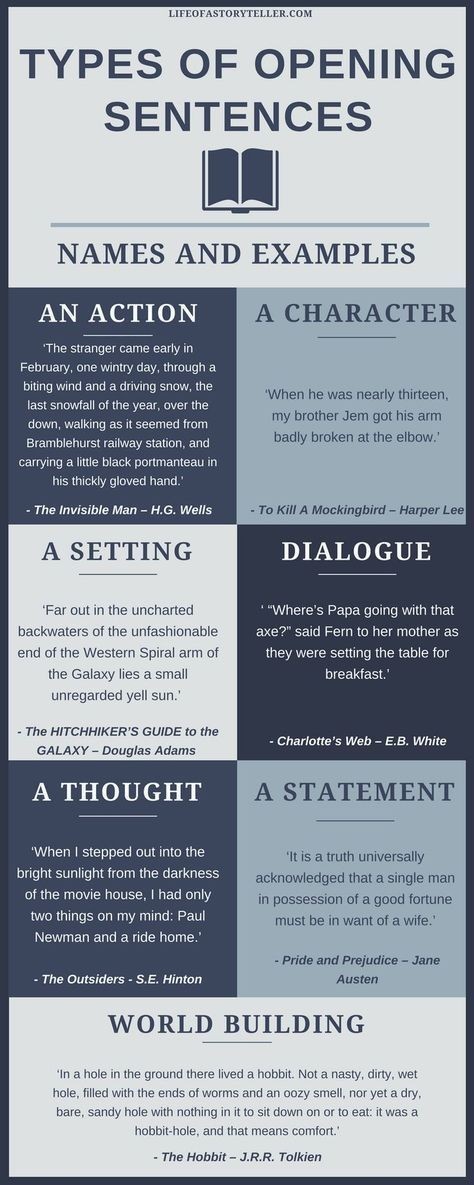
Credit: Lifeofastoryteller.com